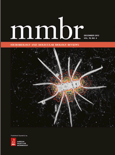
MICROBIOLOGY AND MOLECULAR BIOLOGY REVIEWS
Scope & Guideline
Exploring the Intricacies of Life at the Microbial Level
Introduction
Aims and Scopes
- Pathogenesis and Host-Pathogen Interactions:
A core focus of the journal is on the mechanisms by which microorganisms cause disease and their interactions with host organisms. This includes studies on bacterial virulence factors, immune evasion strategies, and the role of the microbiome in health and disease. - Microbial Ecology and Evolution:
The journal emphasizes the ecological roles of microorganisms in various environments, including their evolutionary adaptations, interactions within communities, and implications for ecosystem health and stability. - Molecular Mechanisms and Techniques:
Research on the molecular biology of microbes, including genetic regulation, signaling pathways, and innovative molecular techniques such as CRISPR and functional genomics, is a significant aspect of the journal's contributions. - Antimicrobial Resistance and Control Strategies:
The journal addresses the critical issue of antimicrobial resistance, exploring the molecular basis of resistance mechanisms, the evolution of resistance traits, and potential strategies for infection control and prevention. - Biotechnology and Applied Microbiology:
The application of microbial processes in biotechnology, including bioremediation, fermentation, and the production of bioactive compounds, is also a key area of interest, highlighting the practical implications of microbiological research.
Trending and Emerging
- Microbiome Research and Human Health:
There is a growing interest in understanding the role of the microbiome in human health and disease, particularly in relation to gut microbiota and its implications for metabolic and immune functions. - Viral Pathogenesis and Host Interactions:
Research on viral pathogens, especially with respect to their mechanisms of infection and interaction with host immune systems, is on the rise, reflecting the ongoing impacts of viral diseases such as COVID-19. - Interdisciplinary Approaches to Microbial Research:
The integration of microbiology with fields such as bioinformatics, systems biology, and environmental science is increasingly prominent, highlighting the need for comprehensive approaches to tackle complex microbial systems. - Emerging Infectious Diseases and Zoonoses:
There is heightened attention on emerging infectious diseases, particularly those that have zoonotic origins, underscoring the importance of understanding cross-species transmission dynamics. - Innovative Therapeutic Strategies:
Recent trends indicate an increasing focus on novel therapeutic approaches, including the use of bacteriophages, antimicrobial peptides, and immunotherapies to combat resistant pathogens.
Declining or Waning
- Traditional Antibiotic Mechanisms:
While antimicrobial resistance remains a vital topic, the exploration of traditional antibiotic mechanisms appears to be less frequent in recent publications, possibly due to the emergence of alternative therapies and a focus on resistance mechanisms. - Basic Bacterial Physiology Studies:
There has been a noticeable decrease in studies focusing solely on basic bacterial physiology without direct applications or implications for health and disease, suggesting a shift towards more integrative and applied research. - Fungal Taxonomy and Classification:
Research dedicated specifically to the taxonomy of fungi seems to be waning, as more emphasis is placed on functional studies and the ecological roles of fungal species rather than their classification alone. - Single-Organism Studies:
There is a trend away from studies focusing exclusively on single microbial species in isolation, with a growing preference for research that examines interactions within microbial communities or between multiple organisms.
Similar Journals
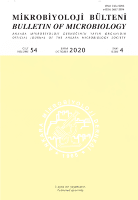
MIKROBIYOLOJI BULTENI
Unveiling the Complexities of Microbial LifeMIKROBIYOLOJI BULTENI, with ISSN 0374-9096, is a prestigious academic journal published by the ANKARA MICROBIOLOGY SOC, located in Ankara, Turkey. Established in 1973, this journal has been a vital conduit for disseminating research in the fields of Immunology, Microbiology, and Infectious Diseases, garnering a reputation as a significant contributor to the scientific community. The journal is currently ranked in the Q3 category within Immunology and Microbiology (miscellaneous), and Infectious Diseases, indicating its impactful presence amidst contemporary research. With access options that may be restricted, MIKROBIYOLOJI BULTENI actively welcomes submissions that advance the understanding of critical microbiological principles and practices, thereby supporting both national and international research efforts. Researchers, professionals, and students are encouraged to explore the latest findings shared in this journal, as it continually shapes the landscape of microbiology and infectious disease studies through its comprehensive and rigorous peer-reviewed publications.
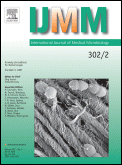
INTERNATIONAL JOURNAL OF MEDICAL MICROBIOLOGY
Innovating Solutions for Infectious DiseasesWelcome to the International Journal of Medical Microbiology, a leading publication in the field of microbiological research and infectious diseases, offered by Elsevier GmbH. Established in 2000, this esteemed journal provides a scholarly platform for the presentation of high-quality research, reviews, and innovations that bridge medical microbiology and clinical applications. With an impressive impact factor positioning it within the Q1 category across multiple disciplines, including Infectious Diseases, Microbiology, and Medicine, the journal is recognized for its rigorous peer-review process and significant contributions to advancing our understanding of microbial pathogenesis, diagnostics, and therapeutics. The International Journal of Medical Microbiology is committed to open access, promoting the dissemination of knowledge and accessibility for researchers, professionals, and students worldwide. Based in Munich, Germany, the journal continues to play a vital role in the global scientific community, fostering collaborations and inspiring future innovations in the fight against infectious diseases.

Microorganisms
Connecting global minds in microbial sciences.Microorganisms is a leading open-access journal published by MDPI based in Switzerland, catering specifically to the rapidly evolving fields of microbiology and virology. Since its inception in 2013, the journal aims to foster the dissemination of high-quality research through its comprehensive and interdisciplinary platform, with a particular focus on both fundamental and applied microbiological sciences. Contributing to its esteemed reputation, Microorganisms holds a commendable Q2 ranking in the categories of Microbiology and Virology, as well as in Medical Microbiology, highlighting its significance in the academic community. With a consistent impact, evidenced by its rankings in Scopus—such as rank #25 in Virology and #56 in Microbiology—the journal serves as an invaluable resource for researchers, professionals, and students looking to stay at the forefront of microbiological research. As an open-access journal, Microorganisms ensures that vital research findings are readily available to a global audience, promoting collaboration and innovation in the study of microbial life and its implications for health and disease.
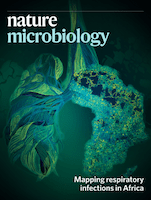
Nature Microbiology
Empowering Researchers to Shape the Future of MicrobiologyNature Microbiology is a premier journal published by NATURE PORTFOLIO that has firmly established itself within the realms of microbiological research since its inception in 2016. Based in the United Kingdom, this prestigious journal specializes in the intricacies of applied microbiology, cell biology, genetics, immunology, and medical microbiology, making it a cornerstone for academics and professionals alike. With an impressive Scopus ranking placing it in the top tier across various relevant categories—such as rank #3 in Genetics and #2 in Applied Microbiology—it underscores the journal’s commitment to high-quality, impactful research. Although it operates under a subscription model, Nature Microbiology's broad Open Access policy facilitates greater dissemination and visibility for its authors. The journal's objectives are centered around publishing cutting-edge advancements that enhance our understanding of microbial life, its interactions, and applications in health and disease. As a Q1 journal across multiple disciplines, it holds immense significance for researchers, professionals, and students enthusiastic about the latest innovations and breakthroughs in microbiology.
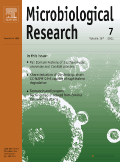
MICROBIOLOGICAL RESEARCH
Leading the Charge in Microbial AdvancementsMICROBIOLOGICAL RESEARCH, published by Elsevier GmbH, serves as a leading platform for advancements in the field of Microbiology, holding an impressive Q1 ranking in its category as of 2023. With an ISSN of 0944-5013 and E-ISSN 1618-0623, this journal has been instrumental in disseminating high-quality research since its inception in 1994 and continues to contribute significantly to the academic landscape through 2024. Positioned within the top 13% of publications in the Immunology and Microbiology category, ranked #24 out of 182 according to Scopus, it attracts the attention of researchers, professionals, and students alike. While the journal is not open access, it offers vital insights and peer-reviewed articles that drive innovation and exploration within microbiological research. Its rigorous selection process underscores the importance of quality and relevance in advancing knowledge in this dynamic field.
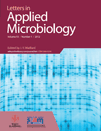
LETTERS IN APPLIED MICROBIOLOGY
Catalyzing Change in Applied Microbiology ResearchLETTERS IN APPLIED MICROBIOLOGY, published by OXFORD UNIVERSITY PRESS, is a prominent journal in the field of applied microbiology, serving as an essential platform for researchers and professionals to disseminate innovative findings. With an ISSN of 0266-8254 and an E-ISSN of 1472-765X, this peer-reviewed journal has been contributing to the scientific community since 1985 and continues to engage with cutting-edge research through 2024. With its current Scopus ranking placing it in the 45th percentile of its category, specifically at rank #70 out of 127 in the Applied Microbiology and Biotechnology field, it underscores its significance in advancing knowledge and applications pertinent to microbial science. Although it is not open access, LETTERS IN APPLIED MICROBIOLOGY offers comprehensive insights aimed at enhancing the understanding of microbiological phenomena in practical scenarios, making it a valuable resource for both seasoned experts and emerging scholars.
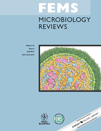
FEMS MICROBIOLOGY REVIEWS
Exploring the Frontiers of Microbial ScienceFEMS Microbiology Reviews, published by Oxford University Press, is a leading journal in the field of microbiology, with a notable impact in related disciplines such as infectious diseases and medicine. Since its inception in 1989, this esteemed journal has grown to occupy a prestigious position, consistently ranking in the first quartile (Q1) in various categories, including Infectious Diseases, Medicine (miscellaneous), and Microbiology. With an impressive Scopus ranking of #13 in Microbiology and #25 in Infectious Diseases, it is recognized for its high-quality and impactful reviews that bridge the gap between fundamental microbiological research and practical applications. Aimed at researchers, professionals, and students alike, FEMS Microbiology Reviews offers critical insights and comprehensive analyses, making it an essential resource for those engaged in the dynamic study of microbial life and its implications for health and disease.

ARCHIVES OF MICROBIOLOGY
Pioneering Insights in Microbiology Since 1974The Archives of Microbiology, published by Springer, is a reputable journal in the field of microbiology, serving as a vital platform for the dissemination of groundbreaking research and critical reviews since its inception in 1974. With an ISSN of 0302-8933 and an E-ISSN of 1432-072X, this journal operates out of Germany and maintains a global reach, promoting high-quality scholarship across multiple disciplines, including biochemistry, genetics, and molecular biology, as evidenced by its Q2 ranking in Medicine (miscellaneous) and consistent Q3 placements in other categories in 2023. Although the journal does not offer open access options, its rigorous peer-review process ensures that published articles are of the highest standard, making it an essential resource for researchers, professionals, and students keen on advancing their understanding of microbial sciences. As the journal converges toward 2024, it remains committed to fostering innovative microbiological research and facilitating interdisciplinary dialogue within the scientific community.

FASEB JOURNAL
Empowering Research Through Interdisciplinary InsightsFASEB JOURNAL, published by Wiley, stands as a leading interdisciplinary platform in the realm of biological sciences, prominently featured in the United States. With an impressive 2023 impact factor placing it in the Q1 category across various fields including Biochemistry, Biotechnology, Genetics, Molecular Biology, and Medicine (miscellaneous), the journal is recognized for its substantial contribution to advancing knowledge and innovation. It serves as a vital resource for researchers, professionals, and students alike, providing high-quality, peer-reviewed articles that explore the molecular and cellular mechanisms underlying health and disease. The FASEB JOURNAL not only emphasizes accessible scientific communication but also fosters collaboration within these dynamic fields, making it an essential publication for anyone engaged in cutting-edge life sciences research. To explore more about the journal's offerings and access its vast repository of scholarly articles, visit their official page.

Cell Host & Microbe
Unraveling the Mysteries of Microbial LifeCell Host & Microbe is a premier journal published by CELL PRESS, dedicated to advancing the field of host-microbe interactions and infectious diseases. With an impact factor reflecting its esteemed position among scholarly publications, this journal not only focuses on the intricacies of microbiology but also delves into critical areas such as Cancer Research, Immunology, and Molecular Biology, maintaining a distinguished Q1 ranking across several categories. Since its inception in 2007, Cell Host & Microbe has been at the forefront of disseminating high-quality research, providing invaluable insights for researchers, professionals, and students alike. The journal is committed to promoting understanding of the complex relationships between microbial entities and their hosts, filtering groundbreaking research from the top echelons. Located in the heart of Cambridge, MA, USA, this journal serves as an essential resource for anyone looking to deepen their knowledge in microbiology and its applications in health and disease.